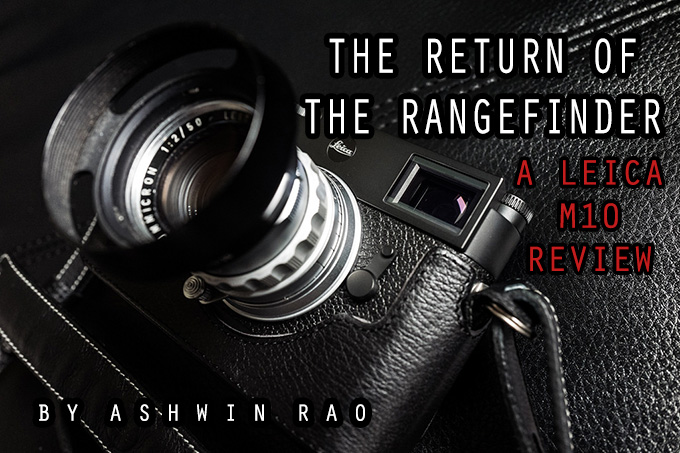
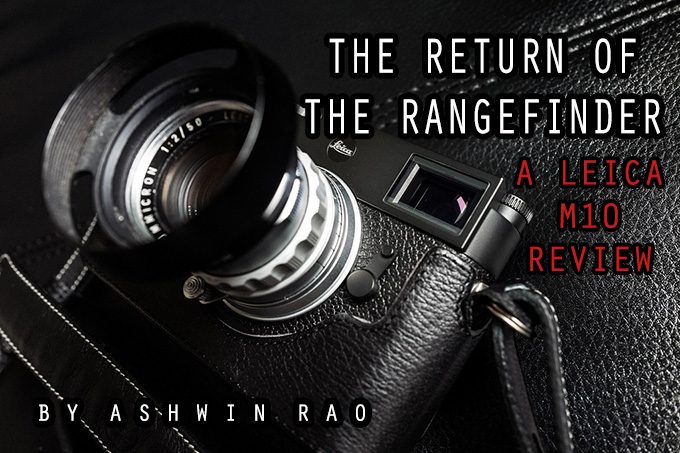
The Return of the Rangefinder! A Leica M10 Review
by Ashwin Rao – Join Ashwin’s Leica M10 Facebook group HERE
(From Steve: Enjoy this fantastic review of the Leica M10 from Ashwin Rao. One of the things that make this website so fun and valuable is that it offers the opinions of others besides myself. Ashwin has been writing for me since the start and a quick search of his name in the search bar above will bring you some invaluable articles and reviews. Enjoy this one, and thank you Ashwin for this wonderful Leica M10 review)
Hello, friends! It’s been a whirlwind of a past 3 weeks since the Leica M10 was announced. I was one of the fortunate ones to receive my camera early, and I have been busy using the camera daily. The Leica M10, as you all know, is Leica’s latest offering, the replacement for the Leica M Typ240, a camera that was met with both adoration and controversy at the moment of its naming, having forgone the numbering designation and included video capabilities and a CMOS sensor. Four years later, Leica has again reversed course, trumpeting the Leica M10 as a return to form in both name and function. Gone is the video. Returning is the classic numbering scheme. Leica has returned to its roots, focusing on a camera that handles much like the original Leica film camers, whose purpose centersw on still photography. How has Leica done? I will discuss that in detail with you over the course of this review.
If you don’t like words and wish to stop reading here for a quick conclusion from me, here you go: The Leica M10 is the best digital rangefinder ever made. For those of you CCD M8 and M9 lovers, this is the camera that will coax you to buy a new Leica. For those film shooters among you whom have waited patiently for the “right digital camera”, this camera should finally sway you buy a digital Leica camera. Why, you ask? If you must know, read on…
The Basics
Let’s get the basics out of the way for those of you who don’t know much about the camera, or who have not read the other numerous reviews out there. The Leica M10, at face value, seems like an incremental evolution of the digital M series. It’s actually the 4th digital rangefinder, having followed the Leica M8, the Leica M9, and the Leica M Typ 240. It was released with much ballyhoo in January 2017, and of this writing, it is incredibly scarce and only in the hands of a few photographers.
Body size
The Leica M10 features two notable improvements over its predecessors. First, and most noticeable, is the new slimmed down body. The Leica M8 and Leica M9 featured bodies that were 14% thicker than the M6 and M7 film bodies that preceded them, measuring in at 139 mm (wide) x 80 mm (tall) x 37 mm (thick). The M8 and M9 weighed in at approximately 600g (with battery and SD card). The M240 came in at an even heftier 139mm x 80 x 42 mm with a weight of 680 grams. The M10 features a substantially slimmer body size that’s 139 mm x 80 x 34 mm, nearly 8 mm slimmer than the M240. The M10 weighs in at 660 g, so while it has lost some weight compared to the M240, it remains a denser/heavier camera than the M8/M9. How does this affect camera handling? Does the slimness make up for the body’s dense feel? In short, yes….The Leica M10 handles and feels much like a film body. In fact, it is only 30 grams heavier than the Leica M6 and M7 film bodies, and within 1 mm in dimension (it’s ever so slightly taller than the film M’s). It’s the camera’s size& weight similarity to film bodies that contributes largely to a feeling of familiar positive nostalgia, particularly for those who are used to shooting film bodies. For those of you who are coming from the M8, M9, or M240, the body feels confident and definitively smaller. While one may not think that a 5 mm of so difference in thickness matters, take one in hand and go shooting for a day. You’ll immediately notice the difference in diminished hand fatigue, among other notable positive handling differences. As reported by longtime Leica photography friends, the M10 has been universally hailed as a return to form from a handling perspective alone…
Viewfinder
It’s incredibly frustrating to come home after a day of shooting to only find a few images in focus. The Leica M camera’s rangefinder encourages parallax focusing, or zone focusing for those who care to do away with dealing with the rangefinder. Over the years, Leica’s attempted a number of strategies to improve focusing accuracy from its venerable RF, especially in light of logarithmic improvements in SLR autofocus capacities. Initially, with Leica’s film bodies, 0.58x, and 0.85x magnifications were offered to complement the 0.72x standard model. Leica’s digital rangefinders up to the M10 offered 0.68x magnification, troubling many purists who found the magnification factor and limited eye relief difficult for focusing, particularly for those photographers using eyewear.
Well, the Leica M10 resolves this matter with it’s vastly upgraded viewfinder. The M10’s upgraded 0.73x viewfinder with notably improved eye relief is its most significant upgrade. The camera is much easier to use for those who wear eye glasses. The viewfinder’s field of view permits easy viewing of 28 mm and narrower frame lines. There are reports that Leica spent a lot of time on their rangefinder, optimizing its accuracy, eliminating issues with front and back focus for many lenses in order to provider rangefinder users with a more satisfying experience. Having now put over 2000 actuations on my M10, I can say convincingly that the adjustments and improvements that Leica has employed for the M10’s rangefinder has made it a much easier-to-focus camera. This feature alone will sate users who struggled in the past with accurately focusing their cameras.
To add to this, the optical elements of Leica’s viewfinder are bright, and the now-standard LED frame lines are obviously bright and easy to use. The frame lines are now optimized now to be accurate to a focus plane of 2 meters, making this a much more accurate framing rangefinder for most subject matter except close-up portraiture work. The viewfinder, to sum it up, is incredible and revolutionary.
ISO dial
The Leica M10’s other notable physical update is the new ISO dial. This clever addition sits in a spot previously reserved for the film rewind knob familiar to M3-M7 shooters and has more recently been occupied by an audio recording device M240 or a frame counter/battery life indicator (M8). The ISO dial provides selections ranging from ISO100-6400, with an A (Auto-ISO) option and an M option for push ISO settings up to 50,000. I have typically set the M option to ISO 10000, which I feel is the highest usable ISO option on the M10 without incurring to much dynamic range loss, color inaccuracy, or frequent issues with banding.
To adjust the ISO dial, the user must pull up on the dial before turning it to set a new ISO. While this seems like an extra step, it prevents the rangefinder from inadvertently drifting to inaccurate ISO settings. I have found that the design and implementation of the ISO dial is actually more useful than I would have imagined. Initially, I expected to set the camera at auto ISO and leave it there. What I have found is having rapid access to other ISO settings allows one to change ISO rapidly to achieve desired effects. For example, I have begun to increasingly experiment with motion blur, and rapidly being able to pull and twist the dial to ISO 100-200 and stop down aperture on the lens can allow me to immediately create a motion blur effect in my images, with all of those needed controls in hand. Further, I am now more aware of the ISO’s necessary to properly expose a particular setting, which seems odd for someone (me) who’s spent over a decade of my life shooting rangefinders. Yet, here I am, increasingly aware of the creative possibilities of ISO adjustment, all because Leica decided to incorporate an ISO dial. I am quite pleased with this addition, and once you adjust, you too will be thrilled to have ISO adjustment at your fingertips.
Bye-bye video (i.e. Addition by subtraction)
Leica made a seemingly counterintuitive (to the rest of the camera industry and some M users) move by forgoing video features in the Leica M10. However, if you know Leica, you know them to be a company to is happy to defy convention and go their own way. Leica took a close listen to its user base, most who rarely used video in the first place. In the interval since the M240 was released, Leica also released the highly capable Leica SL, whose design and implementation are far more suited to videography than the M series cameras. The Leica M240 was an outdated video camera out-of-the-gate, featuring older video codecs, limited audio recording capacities, and a host of features that made it difficult for videographers to use the camera in any serious manner. To boot, the video and audio recording features necessarily made the Leica M240 a heftier camera. In the years since the M240 was announced, the apparent trend of convergence between stills cameras and video cameras has manifested itself with variable sucess, but Leica has rightfully recognized that the M series platform is not really optimized at all for such convergence. Leica smartly moved on and removed video from the M10. As a result, the focus of the M10 is now squarely on still photography, where the Leica M series has always excelled. The removal of video is addition by subtraction, and the Leica M10 is a BETTER M camera, truer to its roots, than the cameras that came before it.
Simplified Button Layout
By now, you may begin to see that many of subtle changes to the Leica M10 are adding up to a meaningful difference, and by the end, you will find that the user experience for the M shooter is vastly improved. To further push the agenda to this end, Leica made a great move to simplify the button layout and menu structure for the M10. Gone is the five-button left-sided layout, replaced by a simplified three-button system. Removed are the “Delete”, “ISO”, and “Set” buttons of the M240 and 246. The M10 features only “Live View”, “Play”, and “Menu” buttons with their respective designated purposes. The only remaining buttons on the camera’s rear are a four-way direction pad which performs menu navigation, a center pad button that provides rapid access to battery life and SD card capacity, and a scroll wheel (located on the thumb rest) that can either be set to focus magnification or exposure compensation. By setting the scroll wheel to exposure compensation adjustment, all key parameters (ISO, shutter speed, aperture, and exposure compensation) are situated easily and intuitively for rapid access.
Front buttons and dials are also cleaned up to emphasize traditional rangefinder features. The M10 brings back the frame line selection level. Previous cameras, such as the M240 and M-E, removed the frame line selector, but the Leica M10 thankfully brings this back. Again, the M10 harkens back to film cameras of its heritage. The only other front side buttons are the lens release button and a front button just below the illumination window that, if pressed during live view, allows for rapid access to focus magnification. A thoughtful functional preservation carried over from the M10, I am glad to have access here.
The only other simplification of note is the change of the on-off switch on the M10. No longer is there an option for single shot or continuous focus. The switch is now either “on” or “off”. If the M10 user wishes to alternate between single shot, or continuous shooting (@ 5 fps), this is accessible through the menu. I am not yet sure how I feel about this change, but it does simplify the layout, and truth be told, I use the M10 as a single shot camera 95% of the time. For the times where continuous shooting is necessary, I can delve into the menu and rapidly select this feature.
I have not spoke much about the shutter speed dial, because it’s unchanged from the M240 and M9 before it. Shutter speeds range from 8s to 1/4000 sec, with Auto and Bulb options. Everything here works as intended; FYI that bulb exposure times are limited to 30 sec and no longer.
New Battery
The Leica M10 employs a new designed BL-SCL 5 battery, which physically smaller battery than the M240’s battery with corresponding reduced capacity. For ambient/indoor temperatures, I have been able to take over 600 images on one change. In colder climates, a typical charge is more likely to last for 300 images. While this may be disappointing to many looking to upgrade to the M10, the size and capacity change was necessary to fit the battery into the substantially slimmed down M10 form factor. Such are the compromises needed. In summary, it’s best to purchase at least 1 spare battery for your typical shooting needs if you are a high volume photographer.
Sensor Performance & Image Quality
The Leica M10 retains the same 24-megapixel count as the Leica M240, SL, and Q cameras. Despite this, Leica has reported that the sensor featured in the Leica M10 is brand new and NOT modified from the M240, Q, or SL. Having seen the output, I can honestly say that the sensor performance that I have seen from the Leica M10 is the best for any current rangefinder available today and competes earnestly or exceeds the performance seen in Leica’s other current offerings (SL and Q), while competing favorably with Sony’s best sensors.
Where the Leica M10’s sensor truly excels is in midtone dynamic range. The M10’s files are capable of being extensively manipulated and they do not seem to fall apart. This is quite different than both the M9, and to some degree, the M240’s files. Adjustments can be made to light, dark, highlights and shadows without much, if any loss of image fidelity. Colors in this range are both accurate and readily adjustable. Further, the M10’s sensor, particularly at ISO’s of 3200 and lower, produces nearly bottomless shadow detail. An image can be horribly underexposed, and yet can be saved by the simple corrections that are employed through post-production software packages such as Adobe Lightroom. At ISO’s higher than 3200, shadows can begin to band if you raise the shadows aggressively. The effect is subtle for ISO 64000 but becomes more notable thereafter. Ultimately, it’s best to get the image properly exposed at the time of exposure, and if you do, you will be rewarded with a rich file, even at ISO’s as high as 10,000, with accurate colors and solid dynamic range. We do live in a glorious time for photography, as sensors perform so well now, and the M10’s sensor is no exception.
The Leica M10 does not perform quite as well with overexposed images or blown highlights. Highlight regions of high contrast images are prone to blowing out, and care should generally be taken to properly expose the scene. To avoid this situation, I generally set exposure compensation to -1/3 stops, and I generally find the images that I produce to have punchy color and controlled highlight region. Consider yourself warned as you begin your own journey with the Leica M10.
The Megapixel Argument
Many will argue that an M10 should have received a megapixel upgrade to 36 or even 42 megapixels. I see this, personally, as unnecessary. First off, the Leica M10 does not incorporate any form of image stabilization. The rangefinder permits stable hand holding of most lenses at even slower shutter speeds, but keep in mind that the clarity and details capable of being resolved by the sensor are negated by any shake/tremor. This is not a huge issue for lower megapixel count sensors, but once a camera begins to employ 36-50 megapixel sensors, extreme care should be taken to preserve image quality to make use of that resolution (or else the camera shake/vibrations will diminish each pixel’s resolving power). This is quite difficult in street shooting circumstances with camera in hand, where the camera and photographer must work spontaneously and organically. In these moments, the sensor should be able to keep up with the photographer. However, high megapixel sensors are very sensitive to any operator error, and tremors of the hand or subtle imperfections in technique are magnified, manifesting as out-of-focus images. Further, higher megapixel counts lead to smaller pixel pitch, which can worsen noise performance and low light image quality. Also keep in mind print sizes when factoring what you need from a sensor. A 24-megapixel sensor is capable of producing high quality printable images at 300 dpi (consider outstanding resolution for prints) at 24×36 inches. How many of us have 24×36 inch images printed and framed around the home? I’d guess that not many of us do. For most people, even a 24-megapixel sensor tests the photographer’s technical ability, and thus, the Leica M10’s sensor is adequately employed to get the most out of the photographer’s abilities while limiting the photographer’s deficiencies as a technical specialist.
Color Performance & Pop
Putting all of the megapixel arguments aside, the Leica M10’s sensor is impressive in its reproduction of natural color. I will come out and say it now: I am a huge fan of the Leica M9’s color palette. I found that if white balance was accurate, the Leica M9 produced images with some of the best color fidelity and pop that I have ever seen, to this day. This is particularly true for the M9’s base ISO files. I felt that the Leica M240 struggled in some situations with accurate color reproduction, and subsequent firmware upgrades have improved but not ideally optimized color performance for issues I am sure are tied to that particular sensor’s spectral sensitivity and software conversion.
The Leica M10, on the other hand, produces colors that are strikingly true to the scene in most situations, including difficult mixed/artificial light circumstances that can often bring out the worst in skin tones. In my opinion, the Leica M10 is the spiritual descendent to the Leica M9, in terms of its color palette. While each camera has its unique way of seeing the image, the Leica M10’s colors seem very true to the scene, and white balance is generally accurate in the Auto WB setting. The M10 RAW files do come out-of-camera slightly muted but readily adjustable in post-processing. With minimal post-processing, the images are immediately punchy and provide the pop and snap that many of us last saw with our M9’s. In summary, I confidently can tell you readers that the M10’s files have that “M9” pop.
I credit the Leica engineers and beta testers for making the necessary observations and arguments to direct this effort into the right arena, because color is so important to get right in today’s cameras. If a camera reproduces color incorrectly, the wind is out of the sales for that camera. Like any camera, it will take a bit of time to adjust to the M10’s colors and image quality, but once you do so, you’ll be rewarded with accurate, punchy colors and the snap that you hope to see in Leica files. That Leica glow, so have you J
Dynamic Range
As I have alluded to earlier, the Leica M10’s dynamic range isexcellent. It’s sensor is not outstanding at controlling highlights (Sony’s full-frame sensors are better at this), but there seems to be more dynamic range available for the photographer in the mid-tones and shadows. This is purely my subjective opinion, but I believe this is a situation where “you can’t have your cake and eat it too.” I will leave it to the sensor engineers and technical experts to duke it out, but this is my opinion. A sensor design seems to reflect choices as to where it can be strong. It appears that Leica’s imaging engineers have chosen to strengthen the camera’s performance in the mid-tones and the shadows at the expense of the highlights. I don’t want to make too much of this, since it’s not a common situation, but is a real issue for those shooting highly contrasted images and scenes. One must take care to slightly underexpose their image in the camera and then adjust the image in post-processing if one is to consistently save highlights. This was much the same case with both of Leica’s M Monochrom sensors, though those cameras have much worse/brittle highlight handling than does the M10.
To move on, I will say that the Leica M10’s ability to produce dynamic, deep, and profound mid-tone and shadow dynamic range at ISO’s through 3200 provides the photographer with near infinite creative control for lower contrast scenes with people and other living subject matter. The M10 is thus an exceptional “people photography” camera, as it excels at reproducing accurate skin tones. In summary, I believe that the Leica M10’s dynamic range competes with today’s very best 35 mm full-frame sensors produced by other companies, such as Sony, Canon, and Nikon. Despites its highlight-handling deficiency, the sensor’s no slouch, and in the areas where it’s strong (mid tones and shadows), it’s an incredible imaging tool that outperforms the competition.
ISO Performance
The Leica M10 is one of Leica’s best performing high ISO cameras, topped by only the Leica SL. Sean Reid and others have systematically tested the M10 against similar full frame sensors, concluding that the M10 performs very well as a high ISO camera. I will leave it to you to consult with them further on this matter. In my experience, I have found the M10 to be a dynamic, enjoyable, color-accurate camera it ISO’s ranging up to 6400, essentially the range available on the camera’s ISO dial. Beyond ISO 6400, the camera is capable of rendering a beautiful well-exposed image. However, if you are shooting at ISO’s beyond 6400 and don’t get the exposure right, you are likely to encounter banding, both in color and black and white images converted from the camera’s RAW file.
Speaking of banding, it’s been an issue in early all of Leica’s camera, and while the Leica M10 by and large escapes the banding problem, it remains noticeable in poorly exposed images at ISO 6400 and above, and can even be seen in properly exposed images at ISO 10,000 and above. SO take care to choose your ISO settings wisely. I myself try to relegate my shooting to ISO 6400 or below, and I have set my M ISO to 10,000.
One major improvement in high ISO performance in the M10 is high ISO color accuracy. This is noticeably better for the Leica M10’s images than for any other camera, including Leica’s own Q and SL. This is really a great development for the prospective M10 photographer, who can now shoot at ISO 6400 expecting accurate color reproduction and minimal artifacts or loss of dynamic range!
Performance in the Field
The Leica M10 is designed to meet the standards of a professional workhorse camera. It’s weather/moisture resistant, though not waterproof. I have used the camera in light rain, heavy snow, and subzero temperatures and have not run into any issues with camera malfunction. That being said, I take care not to douse my camera and dry if frequently, and it’s rewarded me with nearly flawless performance….
Nearly flawless, you say? Well, yes, there are a few issues that can hopefully be ironed out through firmware upgrades. The M10, when shot extensively in fast bursts, can run into occasional card reading errors. I have shot over 2000 images with the camera and have had 1 SD card read out as unreadable on one occasions. My second SD card has had no such issue. I have had 1 episode where i the camera froze up during operation. A quick battery removal and rest solved all of the issues described.
Make sure to have new, high performance SD cards available for your new M10. Make sure to head out with a full battery. If you do so, you’ll have a camera that performs well and does not operationally get in the way. Leica is likely to address any reported issues such as SD card incompatibilities, which have plauged others in the community, through firmware upgrades, so I presume that this issue will be addressed soon.
Summary & Conclusions
You have made it to the end of this article, now nearly 5,000 words long. Thank you for joining me on this journey. I have given the Leica M10 an extensive test, using the camera in as many different circumstances that I could muster in a two-week period. The camera has held up exceedingly well, and it’s performed more consistently than any prior Leica to date. Thus, I give the Leica M10 my HIGHEST recommendation. Buy this camera with confidence. If you have been away from Leica for some time, this is the camera to come back to. If you are the film shooter who’s been waiting for the right camera for which to enter the digital fray, the Leica M10 is the camera for you. It does so much right, and so little wrong. With that in mind, let me summarize what I feel to be the camera’s pros and cons:
Pros
1. Size and handling. The camera is absolutely a pleasure to hold in hand and is confidently built. Just handling the camera will instill the owner with a pride of ownership. Kudos, Leica!
2. Sensor performance. The Leica M10’s sensor is Leica’s highest performing, most mature sensor to date. Images come with accurate color and plenty of pop. M9 fans, rejoice. This is the upgrade you have been waiting for. For you M240 shooters, consider this upgrade if you desire more accurate color reproduction.
3. Simplified layout. The new layout focuses on essentials and gets out of the way.
4. No video. Yes, I consider this an upgrade. If you want video, buy an SL.
Cons
1. Blown highlights. I’ll be frank. This is the biggest issue with the camera, but it’s still a minor issue. One should be aware to underexposure.
2. Occasional freeze ups. This has been an issue that has plagued nearly every Leica. The M10 is not immune, but is better than prior digital M’s.
3. Reported Memory card incompatibility issues. Hopefully fixable through future firmware.
4. Battery capacity. Sufficient but a downgrade in capacity from the M240.
5. Handling. Leica M’s can be a bit slippery. Dressing with a half case or a Thumbs Up grip will help.
6. EVF: Old generation EVF, not really worth the hassle of use.
Ultimately it’s the sum of many small improvements that makes the Leica M10 such a pleasure to use. The sum of these changes adds up to more than each individual change.
Areas for Future Improvement
1. Dust reduction mechanism: Nearly every other professional camera comes with a sensor dust reduction mechanism. Why has Leica not gotten on board. Size is no longer a valid argument, when miniscule full frame Sony bodies have this feature
2. No in-body image stabilization: In the past, the argument has been made that incorporating in-body image stabilization comes at a cost of size and bulk. Well, guess what. Sony’s doing it in their small A7 series bodies. Leica should consider image stabilization, particularly if it elects to offer a higher megapixel camera in future iterations
3. Higher megapixel sensor. This is desired by quite a few members of the community, and if employed, should factor in some form of in-body image stabilization feature.
4. High Quality EVF ported from the SL. Come on Leica. Get with it, and offer a high quality, SL style EVF. It won’t cut into your SL sales, as the M and SL lines are fundamentally different now.
The Emotional Attachment of the Rangefinder
For those of you considering the Leica M10 as your first rangefinder, I am very excited for you. The Leica M10 is a great camera, and you will be a proud owner once you have your own. I remember first shooting with the Leica M6, and soon thereafter with a Leica M8. The experience is, to say the least, a deeply emotional, almost spiritual experience. The Leica photographer can quickly become attached to his or her camera, which soon becomes an extension of his or her own personality.
Leica cameras are built to the highest standards. They feel great in hand. They possess a comfortable and confident heft and a metal build that’s uncommon in today’s plastic and polycarbonate camera world. Leica cameras engender an intense pride of ownership in their owners, who often will sing the praises of their camera in a seemingly irrational manner. Count me among this group of passionate individuals, from all walks of life, who have come to the shared vision of shooting simply with full control over their images.
Leica photographers are artists, collectors, and passionate contributors to the photo community. They love their cameras and they love the images that they can make with these cameras with which they have such a close connection. The Leica M10 is the pinnacle of Leica’s engineering prowess. It’s the best Leica digital camera ever made. I would not be remiss to say that the Leica M10 may be the best camera that Leica’s ever engineered. In the right hands, and with the proper glass mounted, the Leica M10 is capable of producing images that are truly magical, and will leave its owner in awe, excited for the next opportunity to shoot the camera again. Prepare yourself for these feelings, as they are poignant, potent, and powerful. Become a Leica shooter, either for the first time, or again one more time. You will be rewarded with a camera that is capable of exceptional image making, a camera that both bonds tightly to your photographic spirit and gets out of your way, allowing you to maximize your creative expression as you take that next image, that perfect image.
Off you go…
https://www.flickr.com/photos/ashwinrao1/32393292286/sizes/l
I hope that you have enjoyed this review and its accompanying images, which were all made with the Leica M10 and several M-mount lenses. For more of my work, you can find me on facebook (at Ashwin Rao Photography), the Leica M10 User Group, Flickr (ashwinrao1), and tumblr (ashwinrao1.tumblr.com). See you all down the road, around the corner, with my Leica in hand J.
WHERE TO BUY?
The Leica M10 can be bought from the dealers below:
Ken Hansen: Email – khpny19@aol.com
PLEASE! I NEED YOUR HELP TO KEEP THIS WEBSITE RUNNING, IT IS SO EASY AND FREEE for you to HELP OUT!
Hello to all! For the past 8 years I have been running this website and it has grown to beyond my wildest dreams. Some days this very website has a crazy amount of visitors and because of this I need and use superfast dedicated web servers to host the site. Running this site costs quite a bit of cash every single month and on top of that, I work full-time 40-60+ hours a week on it each and every single day of the week (At peak times I receive 100-300 emails a DAY). Because of this, I could use YOUR help to cover my costs for this free information that is provided on a daily basis.
To help out it is simple, and no, I am not asking you for a penny and I NEVER EVER DO! I do this for free basically, and have for years…but I do get paid when you, the reader makes a purchase (of anything) using my links to my sponsors. That is the only way I make the money to keep this free info flowing.
If you ever decide to make a purchase from B&H Photo or Amazon, for ANYTHING, even diapers..you can help me without spending a penny to do so. If you use my links to make your purchase (when you click a link here and it takes you to B&H or Amazon, that is using my links as once there you can buy anything and I will get a teeny small credit) you will in turn be helping this site to keep on going and keep on growing. But each month I need HUNDREDS of you to do this in order for this site to continue, and believe me that is not easy.
Not only do I spend money on fast hosting but I also spend it on cameras to buy to review, lenses to review, bags to review, gas and travel, and a slew of other things. You would be amazed at what it costs me just to maintain this website, in money and time (250 hours a month, and about $3000 per month).
So all I ask is that if you find the free info on this website useful AND you ever need to make a purchase at B&H Photo or Amazon, just use the links below. You can even bookmark the Amazon link (not the B&H) and use it anytime you buy something. It costs you nothing extra but will provide me and this site with a dollar or two to keep on trucking along.
AMAZON LINK (you can bookmark this one)
B&H PHOTO LINK – (not bookmark able) Can also use my search bar on the right side or links within reviews, anytime.
Outside of the USA? Use my worldwide Amazon links HERE!
You can also follow me on Facebook, Twitter, or YouTube. 😉
One other way to help is by donation. If you want to donate to this site, any amount you choose, even $5, you can do so using the paypal link HERE and enter in your donation amount. All donations help to keep this site going and growing!![]() I do not charge any member fees nor do I (nor will I ever) charge for reviews, so your donations go a long way to keeping this site loaded with useful content. If you choose to help out, I thank you from the bottom of my heart.
I do not charge any member fees nor do I (nor will I ever) charge for reviews, so your donations go a long way to keeping this site loaded with useful content. If you choose to help out, I thank you from the bottom of my heart.




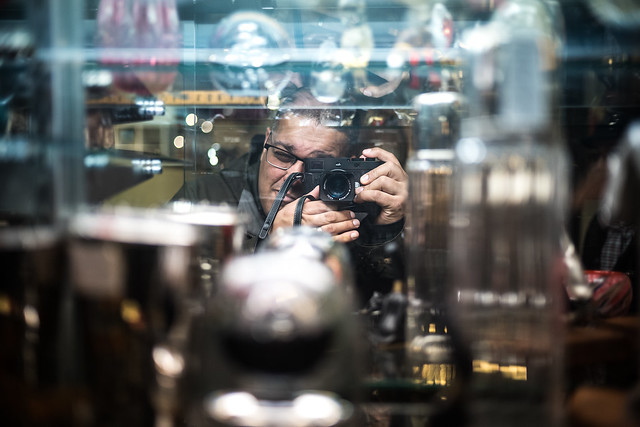

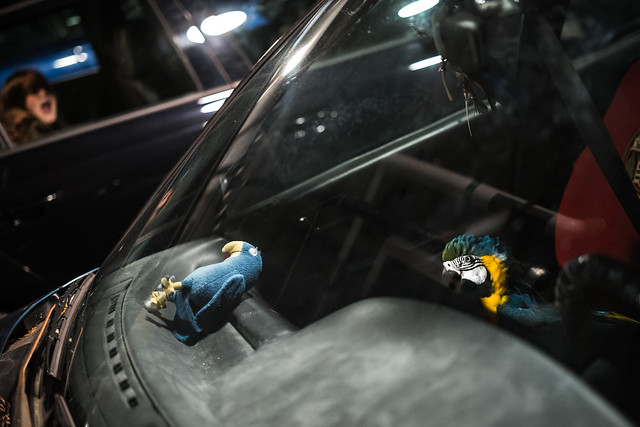
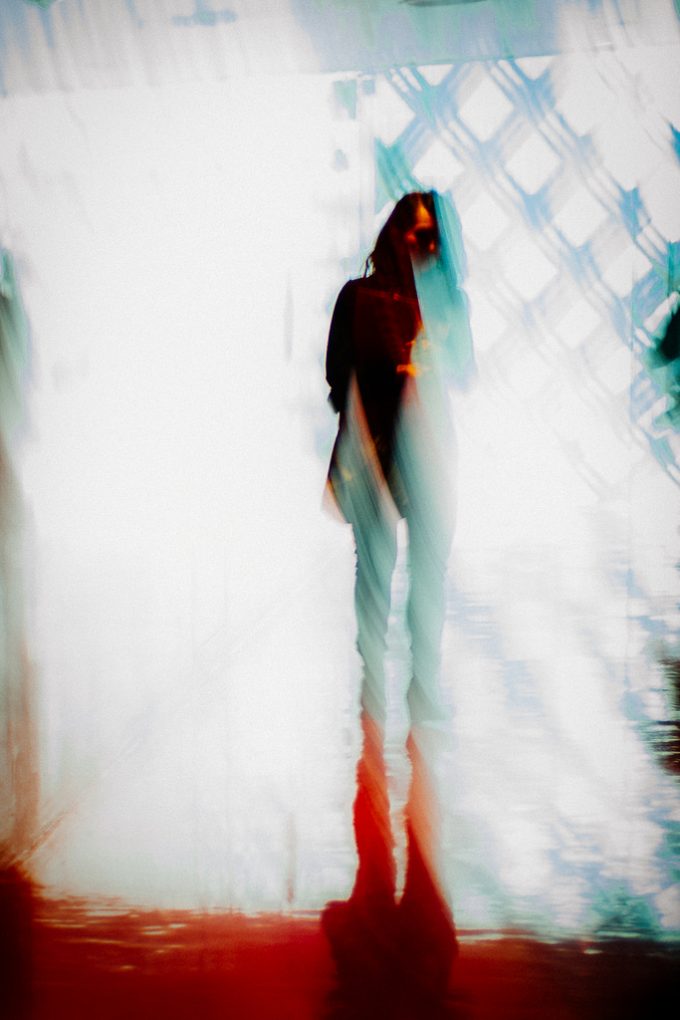


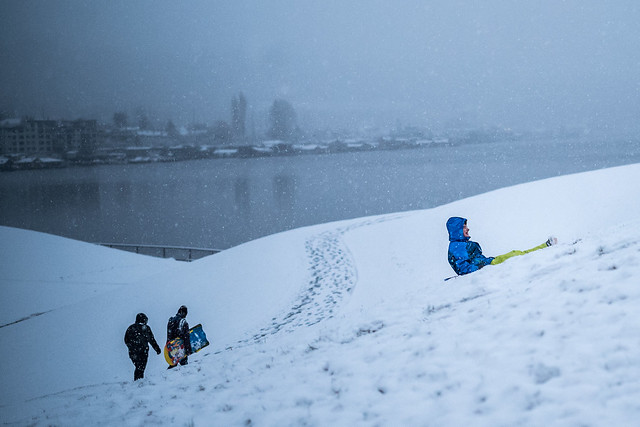
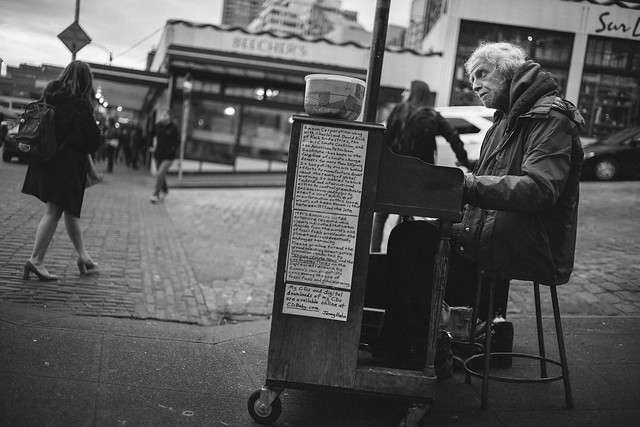
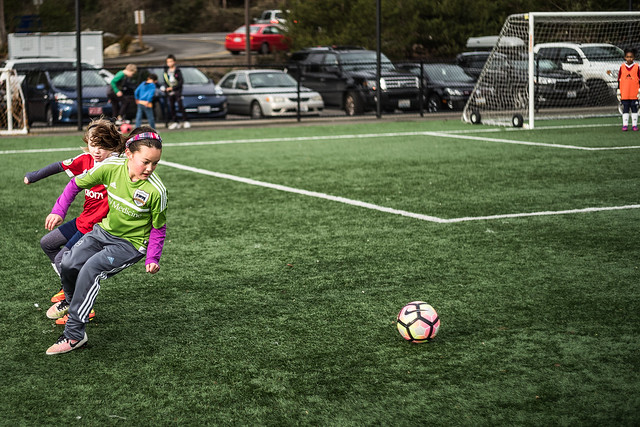
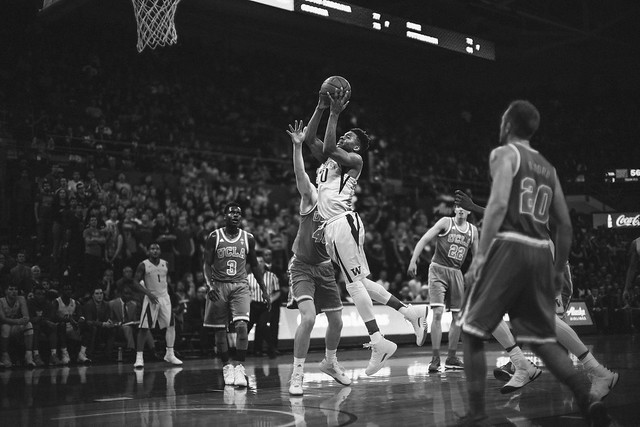


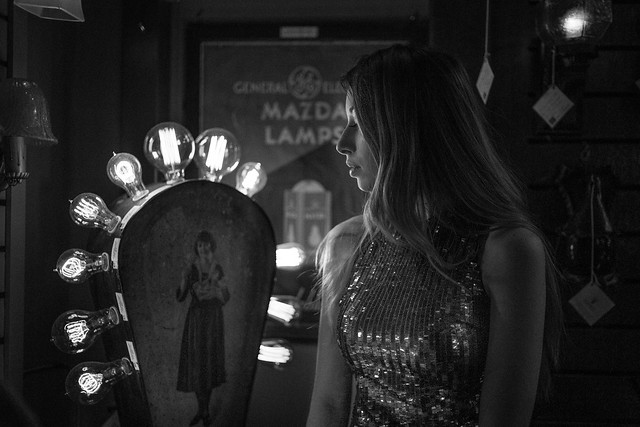
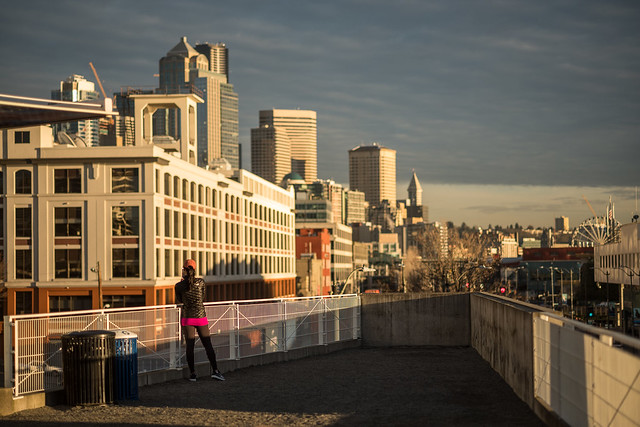
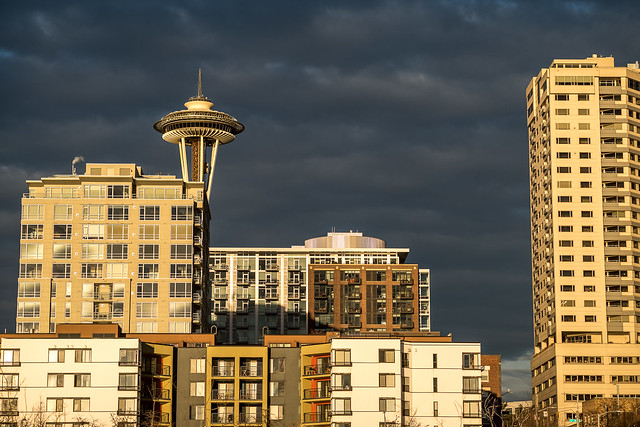
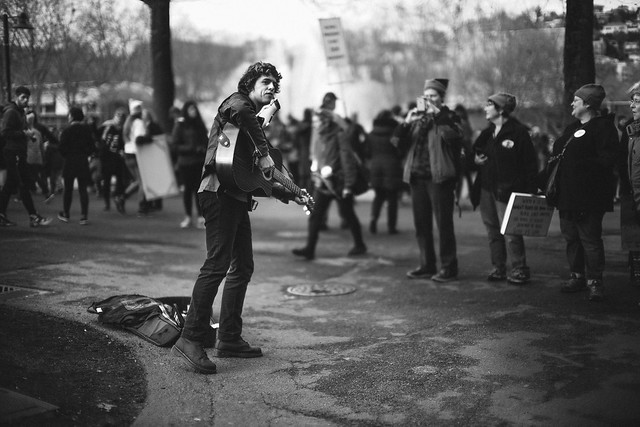





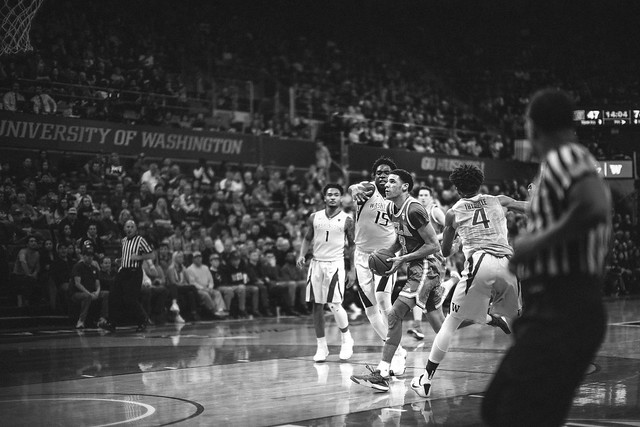

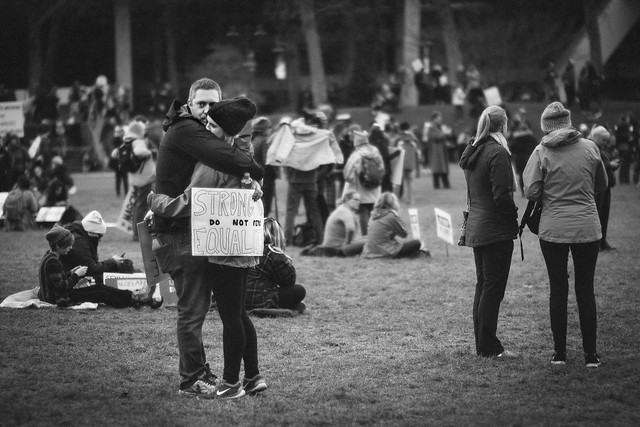









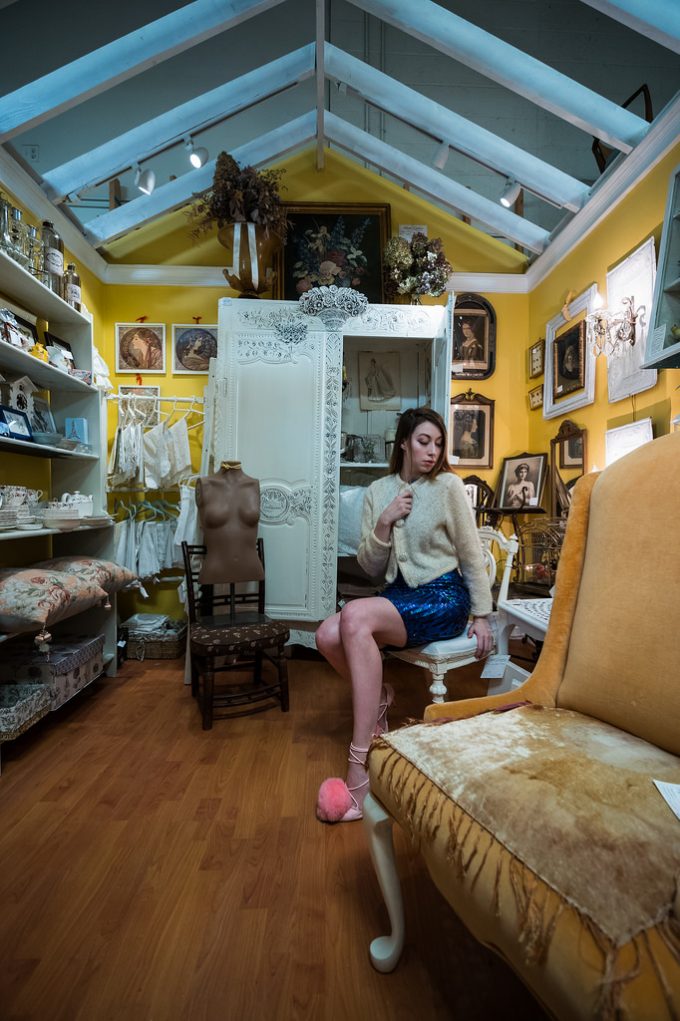



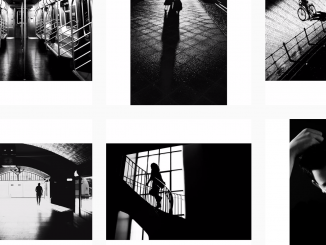

Ive actually decided to buy an M10 but have not pulled the trigger. Difficult to part ways with hard earned money and this being digital – resale value will be half in 3 years for a heavily used one. I wanted to have something with my M9 and I think there is no other choice.
Your pictures answers my doubts. I thought I can wait for a used one in 2020 I think I cant.
Yes, anti-science, god-fearing political cultures excel at evidence-based reflection, that’s for sure.
Sean, way to take the moral high-ground! Good job! I’m sure you also think the protesters at UC Berkeley are great examples of what it means to be an American. You must really love the way they shout down or intimidate any potential speaker they disagree with. Great Americans! They really love liberty and their first amendment rights. Of course, they only love the first amendment when they are the ones exercising it.
I actually agree with Chris and Steve. Steve is allowing life to happen on his site being politically neutral. Chris is simply giving his opinion on content.
yeah bookmaking this wasn’t a risky conclusion great post!
As an American, I think these protesters embody what it means to be American. Good riddance to you and your shortsighted thinking.
Thank you for the elaborate review. A few observations from this former M6 and current digital M-P user. I like the idea of a slimmer body but I do expect the weight to be a lot less too (which should be really the biggest gain). What I like about the type 240 is that the thicker body also seem to balance out well with a lot of the M lenses….how do you experience that?
The other question is: why would you add an iso dial on top instead of an exposure compensation dial? the latter you use on many more occasions than the former….the problem with having the exposure compensation in the current place nml. the wheel is that quite often when you are carrying the camera it changes the settings….what is your experience?
A Sony sensor within a Leica M camera? What a strange thought. The sensor is designed for the camera, in my understanding. Are you assuming the camera was also designed by Sony?
Great review, but tiresome, repetitive Trump=Nazi memed images.
But it’s Seattle after all, where the local political culture favors “feelings”-oriented impulses versus evidence-based reflection. A costal afflicton.
These photos are great!
“One major improvement in high ISO performance in the M10 is high ISO color accuracy. This is noticeably better for the Leica M10’s images than for any other camera, including Leica’s own Q and SL. This is really a great development for the prospective M10 photographer, who can now shoot at ISO 6400 expecting accurate color reproduction and minimal artifacts or loss of dynamic range!”
Reading this — along with some other reviews and observations around the web on the M10 — it seems Leica took a big leap forward with this sensor into a realm that we traditionally associate with cameras sporting Sony-equipped sensors. As Leica has not released any info about who makes this sensor, it wouldn’t surprise me one iota if it’s a Sony chip. They make the best sensors, after all … hands down.
“It also has shoddy low light performance and in anything but great light the images fall flat.”
Nope, sorry. The X-Pro2 and X-T2 are very good in low light. I frequently deliver images to major corporate clients that are used for publicity and shot in the 6400 to 10,000 ISO range, with no complaints whatsoever. I’d put either model up against the M10 in that ISO range, anytime. And Fuji’s colors and tonality straight out of camera? No other manufacturer comes close.
Dear Steve, I thank you very much for your openness and that you also give photojournalism and “zeitgeist” an open stage.
Steve, I don´t disagree as I said I have both, actually an M9P. On the premise that photography is about making pictures, then the camera is only a tool. The handling of a camera play an important role in the picture taking process, hence my original comment. The X-Pro2 is light, easy to hold, can adjust to different eye sights, can be optical or electronic, has a wide Iso range, can do super wide, zoom and telelenses , etc. My Leica on the other hand is heavy, needs a separate diopter lens, is limited in lens focal lengths not easy to focus and is waiting for the sensor to fail. Leica lenses are excellent, but today we have many excellent lenses from many producers, the differences in real world condition are negligible. Love for the aesthetics of Leica is understandable and the myth is well understood.I would still like to see one of your real world comparisons with your Leica versus the x-Pro2 with the new F2 lenses (small as Leica)Thanks
Thanks, Noiregato. Lonzo is a player. It was fun to see him through the viewfinder 🙂
Thank you, Mo….Very kind of you! The files are great! I’d get the M10 and after a few months see how much you have used the M8…then sell if it’s not been used.
Chris, the images are simply reportage, yes of a politically charged matter, but it as Steve said, this is life and this is reportage of how some of America feels. It’s not anti-Americam. America has generally tolerated political discourse and strong challenges in the face of polarizing opion. The photography simply was intended to reflect the tense times that we live in. I will leave it at that.
Thanks, Dan! A Monochrom or M10 is a fine first digitmal M, and I think you cannot go wrong with either choice….may be time to clear out the Nikons
Thanks, Dirk. The a7 series and SL mirrorless cameras offer great options for the M lenses, and the A7 series in particular provides a nice vehicle for smaller bodies with high perforamcne. Maybe Sony will follow your suggestion. That would be fascinating…
It’s called photography and I allow ANYONE to submit their work, and I do not take politics into account. It’s called LIFE, it’s called REPORTAGE, it’s called CURRENT EVENTS. Sorry, but this is life right now and many are shooting it, that is what a photographer does. If you do not like it do not come to this site but i will always allow all voices, and all opinions here.
😉
Thank you for your nice article and some marvellous photos! And a big thanks to Steve who is running the most interesting website regarding the Leica (and other camera makers). I have the feeling you guys complete each other in a quite perfect way :-).
yes, please!
I’m really very glad for the Leica community and I can absolutely imagine the feel good factor that owning this M10 brings along. Your great review and lovely pictures make all of this very clear, Ashwin.
Still, I stay within the A7 camp, offering some very important advantages (for me). To name a few: 50% cost, tiltable LCD (I only use an LCD for its tilting feature: belly level or lower and above head shooting, very important to me), greater cropping power (very usable when “people shooting”). But I’d love to see a simple A7: made just for still images, with only the necessary few knobs for the essential parameters. Although the present A7 series can be perfectly set up to be used in this way (which I do of course), owning such a dedicated camera would give me a lot more joy and pride. Big advantage here for the Leica. As for its one of a kind looks. And the fact that the M-mount lenses are more compact than the Loxia’s. So as things are now, also the banner for size goes to Leica nowadays. IMO Sony needs to work out this simplified body, one that would also be a tad smaller than the present one.
Thank you, Ashwin. This is a fantastic review of M10. I extremely love the paragraph of “The Emotional Attachment of the Rangefinder”. I have similar feeling about Leica M series. I started my photography hobby with Nikon FE-2, then F3, F5 etc. When I tried M6 of my friend, I have fallen in love with it immediately. I managed to save some allowance to get my first RF camera, a used M6 + 35mm cron from ebay. Now she is my lover and we celebrated our 10th Valentine’s day just a few day ago :-). I am thinking M10 or M monochrome will be my first digital M. Probably get M Monochrome at first and M10 next year because I can’t wait that long. On the other said, all of my Nikons are sadly sitting on shelf and covered with some dust. 🙁
Steve, what’s up with all this anti American protester bullshit on your site???? I’m so disapointed, I loved visiting your website over the years and getting your opinions and info you offer but this anti American left wing crap is totally insane!!! Don’t you realize that your turning off allot of people by promoting this childish behavior and yet you want people to support your website. Well over half of this country is fed up with this garbage and want to move forward and clean things up. WHAT A VERY BAD BUSINESS DECISION YOU MADE TO PROMOTE THIS HORRIBLE DISGUSTING CHILDISH BEHAVIOR. I know you don’t give a shit but I’m done visiting your website.
Thanx Ashwin for a very insightful review. Best M10 review out there. It sealed the deal. You really hit the nail on the head. I love the files. And now at last I will, dare I say, part with my beloved M8. Or maybe not. But, yes, I will of course. I think….why do I live this camera so much?
Good pictures! And high contrast….!! High contrast not for everyone
I miss Seattle, lol. Great photos and great review by the way! Has lightroom been able to read the M10’s RAW files yet? From what I have read the M10’s reviews so far, this camera receives such enormous praises.
Great review! Images are great as well, that Lonzo Ball (b&w) image of him driving the ball in the paint is spectacular!
A Fuji X Pro 2 is mo comparison in ANY way to a Leica M 10 (or 240). A: The feel and build, not even close. B: The Fuji is not an RF nor can it even mimic one. C: The Fuji is APS-C and can not use the M lenses to their full potential. D: Fuji lenses are much bigger and again, build wise…no contest. E: I have shot with the XPro 2. It was good but in no way, shape or form competition for those that want a Leica M. It also has shoddy low light performance and in anything but great light the images fall flat. To those that want a Leica, they want a Leica and usually have the cash to buy one. The Fuji, while good for what it is can in no way replicate the experience with the M from build, feel, use, or IQ and the ability to use small, all manual and well made lenses. Some of the best in the world.
ALL comments are moderated to keep out idiots who sometimes like to troll and start trouble or make hateful comments to others. I do not tolerate that here so all comments are moderated.
Bingo 🙂
Is there a reason my comments are moderated?
Very nice photos! I enjoyed your review very much even though this is not a camera for me!
Keep us posted!
Great review and really can see the quality of this M10. I also love how the images are linked from your flickr so we can see a nice quality large size AND then go into the photo itself to see which lens it was shot with! Awesome!!
Hi
Thanks for the review. I love the smaller size, it is a big deal. But I am a bit suspicious of the colors, and the WB, particularly on the basketball pictures, it does not seem right/natural. What do you guys think? I had this issue as well with the M240.
Regards,
Richard
I’ve seen plenty of reviews on here of expensive gear that are just dripping with superlatives and hyperbole – yet the accompanying images did not nothing to justify the price or the enthusiasm. (See recent hasseblad x1d review)
This review does not fall victim of that trap. The images are sensational and are a very strong endorsement of the product and the photographer. It is the one time I’ve been left really wanting an expensive piece of gear that I cannot justify buying. Kudos.
Get a M9. I went from used M8 to new M9. I’m not a serious enough photography to really justify new so I’ll just wait a few years for the M10. I was really perfectly happy with the M8 except low light. Certainly appreciate the advancement.
That is correct, to my knowledge. Not sure why, though.
Thanks much, Tony! I hope that you are doing well!
Steven, you are too kind. Thanks so much, and I will be heading over to see your amazing skiing images!
Sean Reid has shown that the SL performs better, with less luminance and chroma noise at very high ISO (25,000-50,000) than the M10. That being said, I find the grain through ISO 10,000 to be more pleasing on the M10 than the SL, but it’s just a matter of taste. The SL is fantastic, but the M10 seems to have a finer grain structure…I think this needs to be formally tested, but it’s an observation I have noted.
depends what you include in your measurement. I used the baseplate…
Thanks, jrp….I have been working hard to get this right, and it’s good to know it’s paying off.
Thanks, Huss!
Roger, I am sure it’s coming soon. Great of you to read my musings 🙂
Apologies. See comment above.
HI Rick, I used mainly a 35 FLE, but some Voigtlander 28 mm f/3.5, a 50 mm Summicron, and a 50 Noctilux f/0.5 at times.
Hi Ken, I think that the M10 does great BW for 95% of Leica shooters…but the MM is better. For a dedicated BW shooter who does not bother with color, I would argue that the Monochrom is better.
Yeah, get carried away with color and contrast at times 🙂
HI Larry, I try to spend at least a couple weeks with the camera to let the novelty wear off, to see if I still like it/get along with it. I think the reviews that Steve and I (and others, such as Jono, Sean Reid, Phoblographer, Kevin Raber, DP Review) all serve to complement each other as different amounts of time. I wanted to contribute a review having used it daily for 3 weeks in many conditions.
I think firmware will address your concerns. I have really hoped to show that the camera is quite spontaneous, even in fast moving, emotional setting such as the protests above. The freeze ups are rare, but yes frustrating when they happen, but it’s not often, and hopefully a remote occurrence with the firmware upgrades, which Leica did great to get out fast.
Hi J M, if you notice, I mention above that the viewfinder may be the most meaningful camera improvement, more than the slimness or the ISO dial…. The M246 is great. I have one, and it has a stunning output
I agree, Ross. It’s a great camera, and for me, stands alongside the M9 and Monochrom cameras of a testament that Leica can work magic with its rangefinders…
Thanks, Andy! Great to hear from you!
Great pictures!
Do you process in Capture One or Lightroom?
What raw settings do you use for the pictures when processing?
Great pictures!
Do you process in Capture One or Lightroom?
What raw settings do you use for the pictures when processing?
Very nicely written
Lovely shots
Great colors and sharpness
What a camera
Why not buy a Fujifilm X Pro2 and get a modern version of a Leica. I know it is not a true rangefinder, but what are the virtues of rangefinders when you have difficulty to use with glasses, possible mis-calibration of the rangefinder, and have to focus always in the centre of the frame. I own several Leicas, both film and digital and have to say the Fuji x Pro2 with the new F2 series of lenses bets the Leica hands down. I can adjust the diopter of the viewer (Leica no) I can see the pictures on an excellent rear screen ( Leica poor resolution)and can enjoy many more features if needed, all at a fraction of the cost. I would like Steve to do one of his real world tests between these two camera and would challenge him to persuade me to buy this new Leica. Don´t get me wrong, I know the pride of ownership that goes with a Leica but much prefer to shoot with the Fuji.
Wow – that’s a very thorough review and admittedly I didn’t read it all as I’m not really in the market for an M10 right now.
However, I do feel compelled to say that those are some very, very, nice images Mr. Rao!
Well done!!
Shots look amazing! Have they made any difference in the shutter noise as they did on the 262? Would love an M with the same shutter noise as the Q!
Very good, honest and extensive review.
A special and stylish camera, sure, although cons aren’t minor.
It could become a spiritual experience to hold them waiting for new firmwares.
I had a chance to handle and take a few test shots with the M10 at the Leica Store in Las Vegas. I was immediately impressed by the color rendition and 3D-quality of the images I shot with it. Made me long to shoot with a digital Leica again after having switched away from them a few years ago in favor of the Sony A7-series cameras. I still use my Leica lenses on the Sony, but the way the M10 renders color has a special quality to it that is very unique and distinctive. The slightly smaller size of the camera body really didn’t make much of a difference to me compared to previous digital M bodies. If I wasn’t already aware that the M10 body is slightly smaller I wouldn’t have noticed it on my own.
I agree. The 50 Sonnar Zm by Zeiss is almost…in a way…the dreaminess, like a mini noctilux at times. $1100 new. Busy bokeh sometimes but its 10X less expensive and gives a much more creative look than the Summilux. Zeiss planar f/2 competes and some say beats the classic 50 Summicron for $800. Voigtlander 50 1.5 is also excellent and tiny. Voigtlander 35 1.2, Zeiss 35 1.4 ZM, all excellent. With that said, I still dream of the SL and Noctilux combo for some reason ; )
The M262 is an M240 without video. Same sensor as the 240, same everything. Just minus a few bells.
M10 version without screen? Why not but only if Leica will cut the price down and not as it`s customary for them hike it up for such a privilege ,which is pure nonsense. As I said long time ago they could drop the optical finder too and put and EVF one with LF focusing, which of course would double as a basic reviev and magnified sharpness check.. That would make it even cheaper but I doubt Leica is interested in a such machine. Pity
p.s. And what about building a Techart Pro adapter idea in Leica body. A AF Leica for m-lenses, wow.
Wonderful images as per usual Ashwin and nice review.
Ashwin thanks for the wonderful contribution and I have to concur with your observations I really think that they got it right this time.
Like yourself I was in love with the M9 and when the M240 came along it didn’t quite do it for me but I have to agree that this feels so much better after using it for 3 weeks.
I had also come to the same conclusion regards the exposure compensation.
All the best , Regards Ross F
Nicely written review w/good images to accompany .
Yet with everything I read about this latest piece the subject which receives the biggest attention is just how “slim” the 10 is. As the owner of several M’s I find this to be not that important ? As an eyeglass wearer the improvement to the viewfinder is very important to me . What am I missing about this ?
My M246 will more than likely continue to be my favorite of them all , regardless of how fat it is.
Nice review and images. Thanks for the info and the insight. It is interesting the fact that Leica has nice palette, exceptional engineering solutions, physically well made camera; truly solid. However, reporting the occasional freeze ups means Goodbye Decisive Moment and welcome Insecurity. Once more it seems that Leica has refused to bring to the 21st century the Ms.They have consistently refused to fix reported bugs to Ms and like in their website Leica-Fotopark. I would stick out £5600 for a fully functional M10, it is just my left brain does not allow me to do this. I wish they would work as well as my EM1. For now I am sticking to my M7, Olympus and elsewhere for digital.
this is the first time i heard comment like this. what camera do you ?
Great review. Not fair to compare to Steve’s: his was firstest with the mostest, and you were able to spend a lot more valuable time with the camera. They go well together. I have trouble with anyone’s review when there are insufficient photos or to too narrow a range of photos. Your field shots with the camera (does basketball count as a field?) were especially useful. By useful, I mean giving us a chance to see examples of how we might also use this camera as well. For some reason, I examined the quality of the demonstration photos but oddly did not pay much attention to what was being advocated. Perhaps we are all just oversaturated with demonstrations in general. As you’d expect, the new M10 performed well for this subject, and it looks good for portraits and basketball as well. Drives me crazy when reviewers say a camera like this is not good for sports or live action. You just have to sit on the front row and use the right lens and ISO, as your examples have shown.
I have trouble evaluating a camera, however, when I don’t know what lens is being used for each shot. The quality of the image if a function of the sensor and lens combination. If I don’t have the lens that is used, then I can only guess how my lenses would perform. I checked your website and it looked like you were using the Noctilux for the basketball shots, so perhaps for the portraits as well. I will definitely get this camera when it actually becomes available . . . but then, my kids are all out of college already and I don’t like red sports cars. Please keep sharing you work with us here from time time.
Ashwin- Great review! Your passion for the camera and Leica shines through. Although a pure matter of personal taste, you might consider a lighter hand with post-crop vignette. Thanks and enjoy the camera!
Not if you get a Voigtlander or older Leica M lens. Plus the Handevision lenses will come in even cheaper. There are plenty of options, depending on your choice of focal lengths, that keep things very affordable. No need to spring for the ultraexpensive lens.
That would be great, Rick.
THey did not mention anything official, but I have upgraded the firmware, and we’ll see. Fingers are crossed .
It might be my processing, or the shots with warm light (gym and model shots). Outdoors, it seems neutral to slightly cool at times.
It’s always worth waiting, if there’s any question, but yes, there’s a certain allure to the camera. Occasionally I resist, but I did not this time around.
Hi Ashwin, for B&W photo, do you see M10 replacing the need of MM?
Just curious… why does everybody compare the M10 to the M-240 instead of the more recent M-262? I know that the M-262 is supposed to be an entry-level camera, but still… like the M10, the M-262 has no video capability, an improved low light capability over the M-240 by one stop, lighter weight, and other similarities.
I would like to know what lens Ashwin was mostly using for the photos. Great review. If you are a Leica person this is a camera to have. Great addition to the M line of cameras.
Detailed write up, but for heavens sake why do some reviewers never add a note about what lenses they have used?? Surely it adds to the review and at the end of the day the body is only half the story!
Ashwin, great review accompanied by excellent photos.
Kind regards
Huss
There are great lenses that can be used with Leica M cameras that span all budget and, more importantly tastes. You do not have to spend thousands on a new Leica lens. There are some wonderful ones for under $1000 – previous generation Summicrons, as well as excellent offerings from Zeiss and Voigtlander which on the used market can be had for just over $200 (Voigtlander 35 f 2.5 Color Skopar), to $600 (Zeiss 50mm Planar).
Right now, even though I have pricier glass, I am using a $50 (new!) Zenit Jupiter 8 50mm f2 lens.
Great review Ash, I am so ready for mine to get here!!!
Something seems vaguely “off” with the photos under artificial lighting… almost like the red channel is being suppressed somehow… Seems like they could be a bit more colorful/rich in the skin tones independent of the white balance.
Thank you for the kind words, Rick. Leica sure did nail it. I have been working hard to hone my style and imaging…one day at a time. I appreciate you taking notice 🙂
These are great photos, Ashwin. It would be good if you had the time to cover your processing methodology, perhaps in another article. Your colors and sharpening are perfect. They make the pics pop without looking processed or unnatural.
The subject matter may be of current events, but I didn’t take them as politically motivated in any way. Great shots, all around, Ashwin.
WTF about size of M10… Where did you see 34mm???)))
Please check and correct. Size of Leica M10 – 139 x 80 x 38,5mm.
Super review, enjoyed all the real usage insights and the wonderful photos. I am a Leica M fan so people may scoff but this is a great step for Leica.It is a complex balancing act when you deal with Leica M- namely combining the old much loved form with a new exciting performance.
They seem to have achieved this- so kudos.
On a minor point I would love your comments on the following:
Steve said in his review M10 Part 2 – responding to a comment I made indicating that I had heard that the SL was better at super high ISOs
“Anyone who says the SL does better at high ISO has not compared them or used the M10”
You say “The Leica M10 is one of Leica’s best performing high ISO cameras, topped by only the SL”
Needless to say I have no problem with people differing in their opinions and am not saying this in a nit picking or in any manner that might antagonize but am simply curious on the matter.
Thanks again for a super write up.
Another great review Aswhin,
A great camera in the hands of a great photographer = amazing imagery which you are clearly a master.
Great job, Ashwin – very thorough review and the sample images here are really excellent. Some great photography first and foremost, regardless of the kit used to make them. Well done!
Btw, nice review Ashwin. As always!
Very nice review Ashwin….one question somebody told me the default color space was only sRGB
no Adode RGB
And, just to be clear. I really did enjoy Ashwin’s thoughts about the camera and the rest of his images, of course!
Nice review.
I really like this camera, but unfortunately it’s around $10,000 just to get started with one lens.
While I might have feelings about this, the images are meant to represent the possibilities of the rangefinder to discreetly capture what I saw in front of me, political or not. No political motivations were intended, just a desire to capture a moment in time and history.
Nice photographs! Maybe, we’ll run into each other in the real world someday.
Rick
It’s photos, not politics. It’s life, not politics. Cameras are meant to capture life, all sides of it.
thin plus a half case < thick plus half case.
Leica just released an updated firmware, version 1.3.4.0 for the M10 camera. Maybe it will resolve some of the freeze up issues you had?
Thank you for the kind words, Eduardo. I hope that the review is informative for those interested in the cameras, and photography in general.
Thanks for reading it, Michael!
Again a great question. I think they wanted to keep the M10 “simple”. I can see an M10 without a screen in the near future, and apparently a la carte will be on the table soon. This seems like a camera they are aiming to sell long term, to a lot of people….the SL and Q seem to be targeting more tech favored users.
Great question, Frank. I am used to using all of my M’s (film and digital) with half cases, so the slimmed down camera leads to a slimmed down half case as well. Many prefer to shoot their cameras with no accesories, and that is totally fine as well.
Great review Ashwin, and great photos. Interesting to see that M10 keeps the Leica tradition of blowing highlights. It doesn’t bother me as much as in the Monochrome or the M240 though. I don’t know if I am the only one, but the M10 palette reminds me of Pentax colors, with an incline towards yellows, oranges and reds. Thanks.
Excellent review and photos. Why doesn’t Leica (or anybody) give us a 4×5 or square sensor.?
Interesting article, especially as it relates to those features called as missing such as EVF, Stabilization, Dust Reduction, Touchscreen, etc. Leica has all of the components between the S, SL, and Q to create a compelling M camera truly worthy of a new version name. Leica still some of the most desirable glass in the world in its M lenses however provides sub-optimal means to effectively focus them; especially if needing to recompose away from the center point. Leica would open up a whole new market if they just made an M version with EVF functionality like on the SL.
Thanks for the review!!!
It’s the best one so far, even better than Steves (Sorry, but it’s the truth 😉 ).
Also your photos are more stand out and they show that the M10 is the true successor to the M9 ( and the numbering is quite right to Ignore the stupid M240). It really builts on the M9 color fidelity which was week at highlights and shadows and disasterous at anything above ISO320, but had this mid tone magic no other had. This was especially evident when the light was less, I.e late afternoon when daylight colors were more vivid and punchy. And this is now exactly evident with the M10, but you get all those nice improvements on top where the M9 plainly speaking sucks.
All I want now is the silver chrome P Version of the M10. Take my money Leica!
B
I really hate this leica Color signature (if any), all photos in the web looks like they were taken with any camera, with no character at all, a thing that previous models had.
Great content. A lot of annoying proofreading errors…
Well done, Ashwin. Enjoyed your review and the photos. Not sure I will ever be able to afford another Leica but in case I come into a large inheritance or win the lottery, I will pick one up.
Sticking with my M9 and M Monochrom, but I could live with an M10…
Regarding Banding: I did some tests with different speed SD cards in the M Monochrom, M9, M8, and Nikon Df. At high-ISO using slower SD cards improved things. Maybe less power draw, less RF noise, less bursty behavior: but it made a difference. I keep a 4x SD card in the Df bag for shooting high-ISO, and made them standard on the Leicas.
It might be worth a try on the M10- they are dirt cheap. I like the 4x, 8GByte PNY and Sandisk cards.
Still have the J-3?.
Well, if the camera is never going to come in budget to be enjoyed, the next best is your review, Ashwin! Thanks.
Excellent photos. I think the camera’s color reproduction is biased towards the warm side of the spectrum, not really balanced.
Seem’s Leica finally has made a great digital m-camera! The m9 had to much contrast, the shadows was to green, and when you photograped inside in warm light, sometimes the skintone looked like scars between shadow/ light. Still the colours was more neutral and right than the yellow/red tone on m240.
Thanks for a great review with many representative images….A Leica in the hand has consistently released my photographic attitude and encouraged me to broaden my photographic approach…the mind is freed from the many switches and buttons and allowed to concentrate on composition and perspective and content… From M2 and M3 to current models… I have enjoyed my Leica shots more compared to images from other cameras….
Stuart
Super duper. No doubt it`s a step in right direction. There was one thing that bothered me a bit. Bright LED illuminated frames. I had an impression that illumination changed with ambient light. Lower light , brighter frames. For a user of classic M6 it`s very annoying thing. For the first when moving camera I don`t wont to distracted by adjusting frame brightness for the second in the low ambient light they are far too bright and thick. Is there any way to manually set illumination level in menu? And of course you have to turn the cam on to see the frames. Pressing the frame lever to activate them in off position would help. I forgot to check if you can.
I really don’t want to buy another camera so soon, but this is really tempting.
It’s Steve’s site so of course he can publish whatever he chooses. For myself, articles like this are more enjoyable free of politics.
Ashwin – You have become an seriously accomplished photographer. There are some really nice shots in this review. Although, I mostly looked at your photos, what I did read seem to echo my thoughts on my M10 over the last several weeks. Leica really nailed it with this one.
Great review. Thank you very much. Success and excellent photos!
Wow!
Hi Ashwin!
Thx for all your efforts writing this honest review of the M10. I had the chance to get my hands on the M10 of my neighbour, comparing it to my SL, and indeed, it IS the best digital M so far.
😉
best regards,
Michael S.
I wonder why Leica did non implement the T’s touchscreen, even if only for a more purist appearance, a more intuitive and flexible user interface, perhaps with a “vulcanite” screensaver to simulate a body without LCD?
For those who never handled a classic Leica M for film, the importance of the slimmer body is hard to comprehend. To the untrained eye the M appears as a brick with rounded edges. But the proportions are just perfect for the human hand, without the obvious dents or bumps on modern, “ergonomic” devices. For this many including myself would have even accepted an M without LCD. But it apparently is difficult to implement a fast, wireless link to an external smartphone or tablet.
Perhaps I am the only one who doesn’t get this. As you listed,
“Pros
1. Size and handling. The camera is absolutely a pleasure to hold in hand and is confidently built. Just handling the camera will instill the owner with a pride of ownership. Kudos, Leica!”
and
Cons
5. Handling. Leica M’s can be a bit slippery. Dressing with a half case or a Thumbs Up grip will help.
”
If one values the slimmed down M10 body so much, why bother dressing a half case?